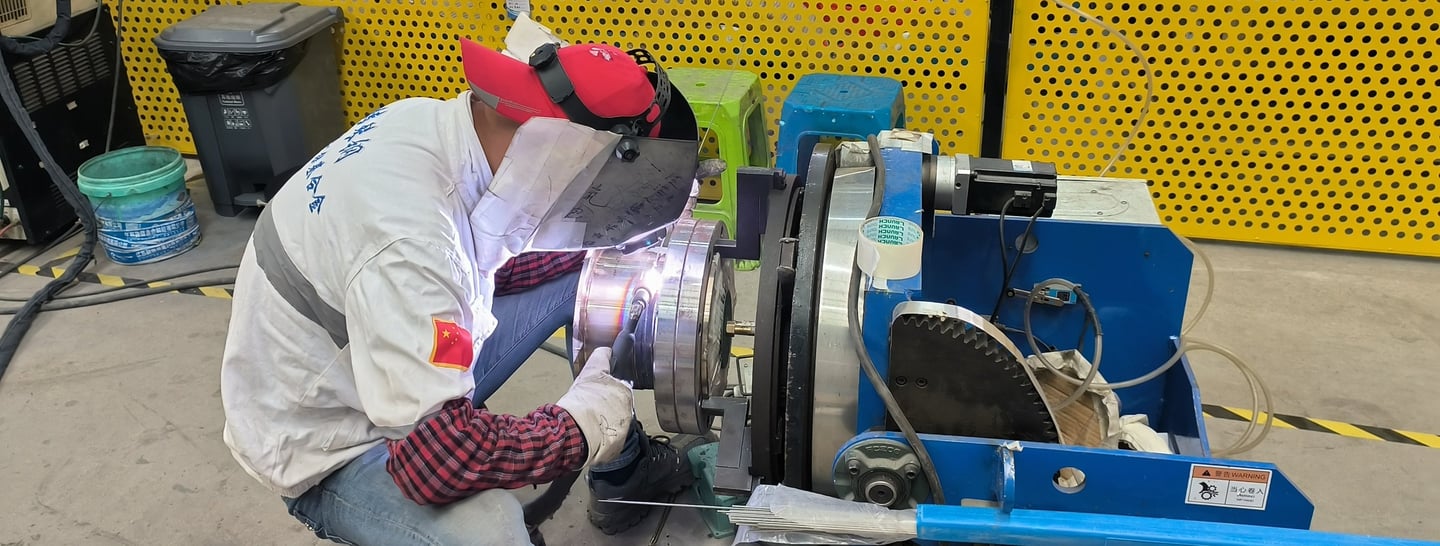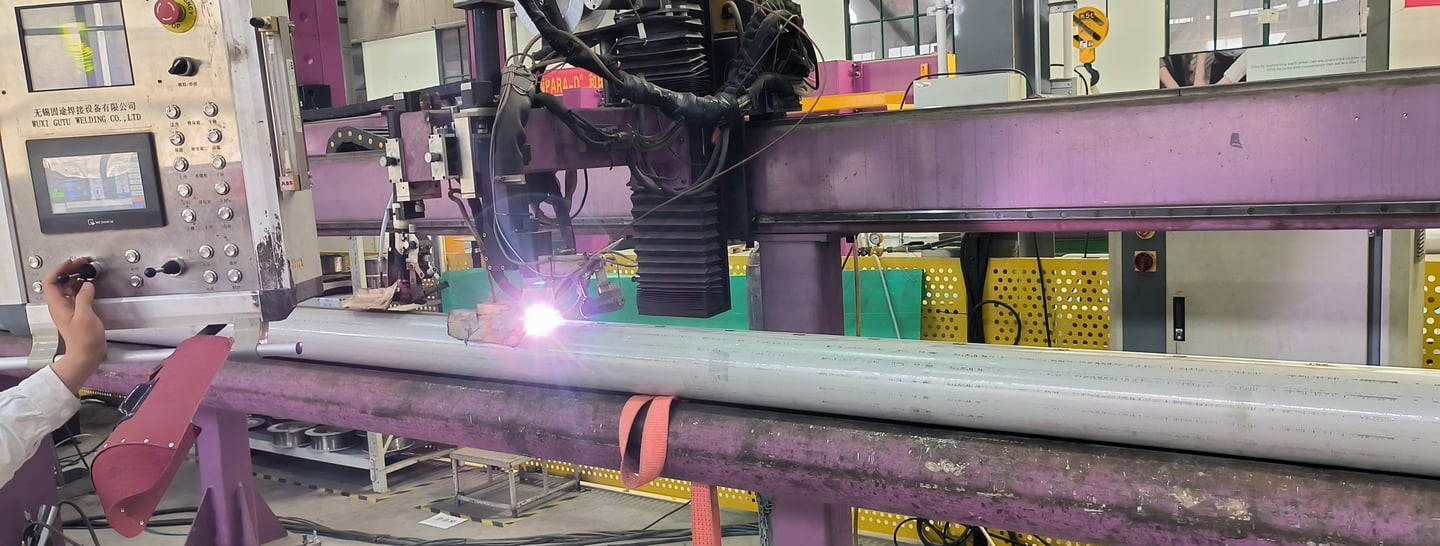Comprehensive Guide From PMI Piping : How Pipes Welded Together
Overview: In the global landscape of industrial infrastructure, the integrity of welded piping systems is paramount. Selecting the right welding method, optimizing efficiency, ensuring stringent quality control, and managing costs are critical considerations for businesses in Europe and America seeking reliable and durable piping solutions. This article delves into the intricacies of pipe welding, examining various methods, efficiency drivers, quality assurance measures, and cost factors. Special attention is paid to the expertise and certifications of PMI Piping, a leading China Corrosion Resistant Alloys Welded Piping Manufacturer and Exporter, emphasizing its commitment to excellence in producing high-quality Welded Piping solutions using materials like nickel alloys, duplex superduplex, stainless steel, and offering Custom Alloys Welded Pipe options. This resource aims to equip international clients with the knowledge needed to make informed decisions when sourcing welded pipes, particularly those requiring demanding performance and corrosion resistance.
KNOW-HOW
Hans Graf
4/30/20257 min read
Table of Contents:
1. Introduction: The Importance of Robust Pipe Welding
2. Welding Methods for Pipes: A Comparative Analysis
2.1 Shielded Metal Arc Welding (SMAW)
2.2 Gas Tungsten Arc Welding (GTAW)
2.3 Gas Metal Arc Welding (GMAW)
2.4 Submerged Arc Welding (SAW)
2.5 Automated Welding Techniques
3. Welding Efficiency and Equipment Automation
3.1 Factors Influencing Welding Speed
3.2 The Role of Automation in Enhancing Efficiency
3.3 Considerations for Selecting Automated Welding Systems
4. Welding Quality: Ensuring Structural Integrity
4.1 Material Selection and Preparation
4.2 Welding Parameter Control
4.3 Post-Weld Inspection and Testing
4.4 The Significance of PMI Piping and its Quality Assurance System
5. Welding Cost Price: Balancing Quality and Affordability
5.1 Factors Affecting Welding Costs
5.2 Strategies for Cost Optimization
5.3 Value Proposition of Sourcing from China Corrosion Resistant Alloys Welded Piping Manufacturer and Exporter
6. Advantages and Disadvantages of Various Welding Methods
6.1 SMAW: Simplicity and Versatility
6.2 GTAW: Precision and High-Quality Welds
6.3 GMAW: Speed and Efficiency for Thicker Materials
6.4 SAW: High Deposition Rates for Large-Scale Projects
7. PMI Piping: A Trusted Partner for Alloy Pipe Welding
7.1 Commitment to ISO9001 Quality System
7.2 Stringent Quality Control Procedures
7.3 Certifications: DNV IS0 9001 Quality System Certification, DNV Welder Certified, LR Outer Tube Product Certification, CCS Welding procedure Qualification, Production License of Special Equipment, LR Welded Construction Manufacturers Certified.
7.4 Specialization in Custom Alloys Welded Pipe
Contents:
1. Introduction: The Importance of Robust Pipe Welding
The reliability and longevity of piping systems are inextricably linked to the quality of their welded joints. From transporting crucial fluids and gases in oil and gas facilities to conveying water in municipal infrastructure, welded pipes form the backbone of numerous industries. The integrity of these welds directly impacts operational safety, environmental protection, and overall project costs. In environments where corrosive substances are present, the selection of appropriate welding methods and materials is even more critical to prevent premature failure and costly downtime.
2. Welding Methods for Pipes: A Comparative Analysis
Selecting the optimal welding method for pipes requires a thorough understanding of each technique's capabilities and limitations. Factors such as material type, pipe thickness, welding position, accessibility, and desired weld quality all play a role in determining the best approach.
2.1 Shielded Metal Arc Welding (SMAW): Also known as stick welding, SMAW is a versatile and relatively inexpensive method suitable for a wide range of materials, including carbon steel, stainless steel, and some nickel alloys. It is particularly useful for field repairs and applications where portability is essential. However, SMAW typically has a lower deposition rate and requires more operator skill than other methods.
2.2 Gas Tungsten Arc Welding (GTAW): Often referred to as TIG welding, GTAW is known for producing high-quality, precise welds. It is commonly used for welding stainless steel, nickel alloys, and other materials requiring superior weld integrity. GTAW is slower and requires more operator skill than other methods, making it best suited for critical applications and thinner materials. It also provides excellent control over the weld pool, resulting in cleaner and more aesthetically pleasing welds.
2.3 Gas Metal Arc Welding (GMAW): Also known as MIG welding, GMAW is a faster and more efficient method than SMAW or GTAW. It is well-suited for welding thicker materials and can be automated for high-volume production. GMAW offers various modes, including short-circuit, spray transfer, and pulsed spray, allowing for flexibility in welding different materials and thicknesses. However, GMAW can be more prone to spatter and requires proper shielding gas selection for optimal results.
2.4 Submerged Arc Welding (SAW): SAW is a highly efficient and automated welding process typically used for joining thick plates and pipes in a flat position. It offers high deposition rates and produces high-quality welds with excellent penetration. SAW is commonly employed in the fabrication of large-diameter pipes and pressure vessels. The process is characterized by the use of a granular flux that covers the welding arc, protecting it from atmospheric contamination and enhancing weld properties.
2.5 Automated Welding Techniques: Automation plays a crucial role in enhancing welding efficiency, consistency, and quality. Automated welding systems can significantly reduce welding time, minimize operator errors, and improve overall productivity. These systems often incorporate robotic arms, programmable logic controllers (PLCs), and sophisticated sensors to control welding parameters and ensure precise weld placement. The use of automated welding is particularly beneficial for repetitive welding tasks and large-scale projects.


3. Welding Efficiency and Equipment Automation
Optimizing welding efficiency is essential for reducing production costs and meeting project deadlines. Several factors influence welding speed and overall efficiency.
3.1 Factors Influencing Welding Speed: These factors include the welding method used, the material thickness, the joint design, the welding parameters (e.g., current, voltage, travel speed), and the operator's skill and experience. Proper joint preparation, such as beveling and cleaning, can also significantly improve welding speed and quality.
3.2 The Role of Automation in Enhancing Efficiency: As mentioned earlier, automated welding systems can drastically improve welding efficiency by reducing manual labor, minimizing errors, and optimizing welding parameters. These systems can consistently produce high-quality welds at significantly faster rates than manual welding.
3.3 Considerations for Selecting Automated Welding Systems: When selecting automated welding systems, it is crucial to consider factors such as the type of welding process, the size and shape of the pipes, the required welding speed and accuracy, and the cost of the system. It is also important to ensure that the system is compatible with the existing production infrastructure and that operators are adequately trained to operate and maintain the equipment.
4. Welding Quality: Ensuring Structural Integrity
Maintaining high welding quality is paramount to ensuring the structural integrity and long-term reliability of piping systems. A robust quality assurance program should encompass material selection, welding process control, and post-weld inspection and testing.
4.1 Material Selection and Preparation: The selection of appropriate welding materials that are compatible with the base metal is crucial. Proper material preparation, including cleaning and beveling, is also essential for achieving sound welds.
4.2 Welding Parameter Control: Precise control of welding parameters, such as current, voltage, travel speed, and shielding gas flow, is critical for producing high-quality welds. Monitoring and adjusting these parameters throughout the welding process helps to ensure consistent weld penetration, bead profile, and mechanical properties.
4.3 Post-Weld Inspection and Testing: Post-weld inspection and testing are essential for verifying the integrity of the welded joints. Non-destructive testing (NDT) methods, such as visual inspection, dye penetrant testing, radiographic testing, and ultrasonic testing, are commonly used to detect surface and subsurface defects. Destructive testing methods, such as tensile testing, bend testing, and hardness testing, can also be used to assess the mechanical properties of the welds.
4.4 The Significance of PMI Piping and its Quality Assurance System: PMI Piping distinguishes itself through its unwavering commitment to quality. The company strictly implements the ISO9001 quality system, ensuring that all processes, from material sourcing to final inspection, adhere to the highest standards. This commitment is reflected in their numerous certifications, including DNV IS0 9001 Quality System Certification, DNV Welder Certified, LR Outer Tube Product Certification, CCS Welding procedure Qualification, Production License of Special Equipment, and LR Welded Construction Manufacturers Certified. This comprehensive approach guarantees that PMI Piping delivers reliable and durable Welded Piping solutions that meet or exceed customer expectations.
5. Welding Cost Price: Balancing Quality and Affordability
While quality is paramount, cost is also a significant consideration for businesses seeking welded piping solutions. Understanding the factors that influence welding costs and implementing strategies for cost optimization is essential.
5.1 Factors Affecting Welding Costs: These factors include the welding method used, the material costs, labor costs, equipment costs, energy costs, and overhead costs.
5.2 Strategies for Cost Optimization: Strategies for cost optimization include selecting the most efficient welding method for the application, optimizing welding parameters, automating welding processes, minimizing material waste, and implementing effective inventory management.
5.3 Value Proposition of Sourcing from China Corrosion Resistant Alloys Welded Piping Manufacturer and Exporter: Sourcing from a reputable China Corrosion Resistant Alloys Welded Piping Manufacturer and Exporter like PMI Piping can offer significant cost advantages without compromising on quality. These manufacturers often have access to lower labor costs, competitive material prices, and efficient production processes, enabling them to offer cost-effective solutions to international clients.
6. Advantages and Disadvantages of Various Welding Methods
A concise summary of the strengths and weaknesses of each welding method is presented below.
6.1 SMAW: Simplicity and Versatility: Advantage: Portable, inexpensive. Disadvantage: Lower deposition rate, requires more operator skill.
6.2 GTAW: Precision and High-Quality Welds: Advantage: High-quality welds, precise control. Disadvantage: Slower, requires more operator skill.
6.3 GMAW: Speed and Efficiency for Thicker Materials: Advantage: Fast, efficient, suitable for thicker materials. Disadvantage: Can be prone to spatter, requires proper shielding gas selection.
6.4 SAW: High Deposition Rates for Large-Scale Projects: Advantage: High deposition rates, high-quality welds, excellent penetration. Disadvantage: Limited to flat position welding, requires specialized equipment.
7. PMI Piping: A Trusted Partner for Alloy Pipe Welding
PMI Piping stands out as a reliable and experienced manufacturer of Welded Piping solutions. The company specializes in producing high-quality pipes using a wide range of materials, including stainless steel, nickel alloys, duplex superduplex, and other corrosion-resistant alloys.
7.1 Commitment to ISO9001 Quality System: PMI Piping's adherence to the ISO9001 quality system ensures that all processes are rigorously controlled and monitored to meet the highest standards.
7.2 Stringent Quality Control Procedures: The company employs stringent quality control procedures at every stage of the production process, from material sourcing to final inspection, to ensure that all products meet or exceed customer expectations.
7.3 Certifications: The following certifications validate PMI Piping's commitment to excellence: DNV IS0 9001 Quality System Certification, DNV Welder Certified, LR Outer Tube Product Certification, CCS Welding procedure Qualification, Production License of Special Equipment, LR Welded Construction Manufacturers Certified.
7.4 Specialization in Custom Alloys Welded Pipe: PMI Piping offers Custom Alloys Welded Pipe solutions tailored to specific customer requirements, ensuring that the right materials and welding methods are used to meet the most demanding applications. PMI Piping is a well-known and trusted professional alloy pipe welding production factory.
For more information about our range of welded pipes, please visit www.pmipiping.com and contact the PMI Piping sales office at sales@pmipiping.com.
We are ready to assist you with your specific requirements and provide tailored solutions for your welded piping needs.


PMI Piping How Pipes Welded Together (2)
PMI Piping How Pipes Welded Together (1)
PMI Piping stands as a prominent China manufacturer specializing in the design and production of welded piping fabricated in corrosion-resistant alloys. We serviced industry cover petroleum, chemical, metallurgy, environmental protection, marine engineering, environmental engineering, new energy, energy storage, and pharmaceutical equipment.
Email : sales@pmipiping.com
Mobile: + 86 139 2823 4834
© 2025. PMI PIPING . All rights reserved.
Contact
NO.18,Xinye 4 Road, Shunde Distric, Foshan City,Guangdong P.R. China, 528300
Phone : + 86 757 2639 1388


